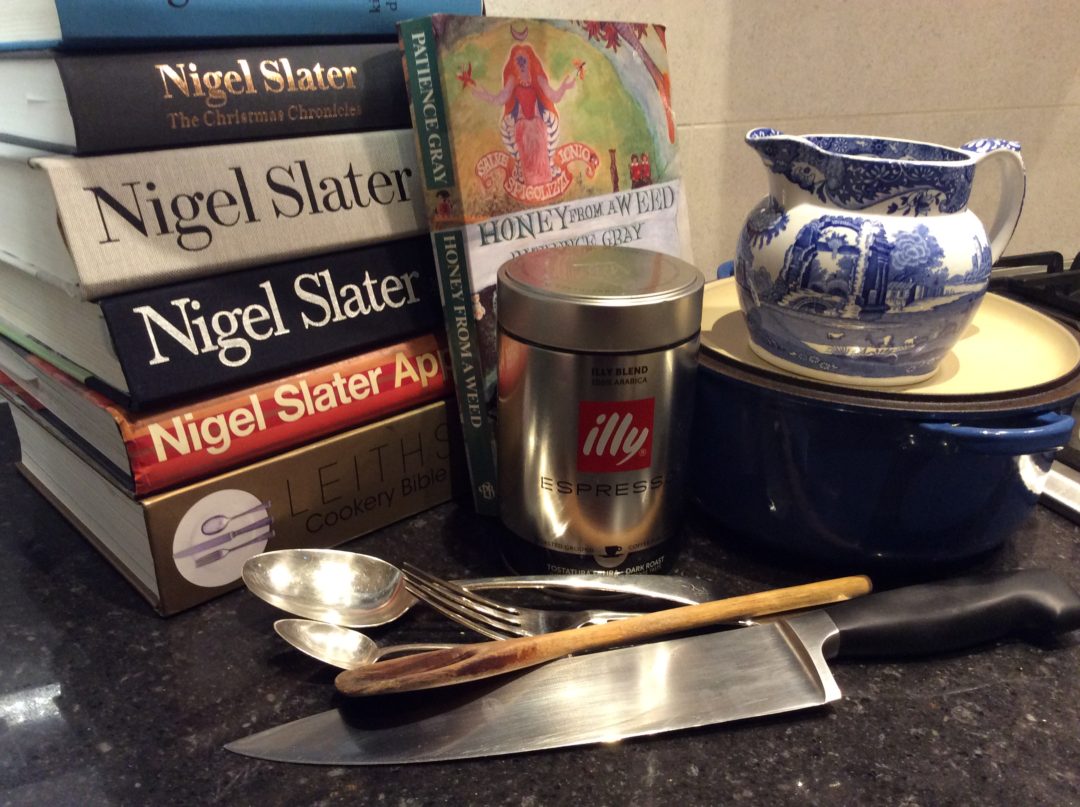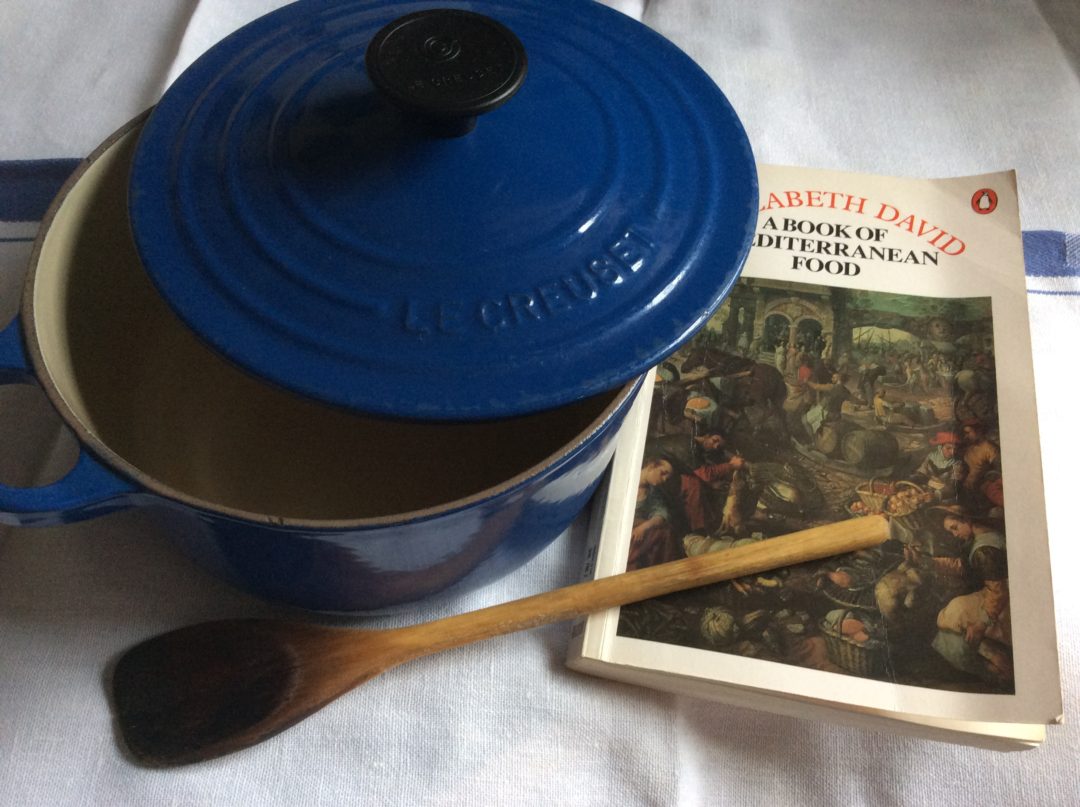Desert Island Discs is, as I’m sure you know, an almost mythical BBC Radio 4 programme and I adore it. I tend to listen to it irrespective of the guest, so consequently have learned about all kinds of things that I would not otherwise have heard. I am not keen when it’s what I would call trashy celebrities but even then one can be surprised, and I do love a good scientist!
Listening to this past weekend’s edition got me pondering the concept of Desert Island items and I began to wonder what eight kitchen items I would want to take to a desert island, which food or cookery book I’d take and what would my luxury kitchen item be? Yes, I know, there might not be means to cook on a desert island but can we play by my rules and assume there is a source of fire with matches, twigs and timber for the fire?
This has taken me quite a while to even begin to firm up on, and if you were to confront me with this list in a month or a year’s time, I might change it completely. So, for what it’s worth, here’s my list:
- A Henckels knife or can I cheat and say my whole knife block? That’s one item isn’t it? I bought my first one in Düsseldorf when I was working there in 1996 and one knife transformed my whole way of preparing food. I understood suddenly how important a knife – used well – is in a kitchen and how it can replace dozens of useless gadgets that live for a day and then fester unloved in a dusty drawer. I went on to do Knife Skills courses at Leith’s which an investment I have never regretted. It does mean, however, that I find some TV cooks all too hair raising to watch and I sometimes hide behind a cushion when they are chopping.
- A tablespoon. I have a silver one, hallmarked for 1764, all worn away on one side and I love it. Wish it could talk.
- A teaspoon. Another old piece although a young gun at 1823.
- A wooden spoon. I have one that dates back to 1976 (how I know that is a whole other story) and it’s acquired a patina that for me represents years of stirring, scraping and prodding. I will never discard it.
- A fork. Again I have an old silver one, a bit big for everyday eating but on this island, it will do double duty as a kitchen fork.
- A Le Creuset casserole, not a huge one; I have a 20cm round one which I was given in 1979 and I have cooked pretty much anything and everything in it: soups, stews, puddings, bread, I could go on but you get the picture
- My huge steel pasta cooking pot with internal drainer – they would serve many purposes: drawing water, draining stuff, heating water…
- A jug; I have a old Spode Blue Italian one and again it has history with me and would fulfil multiple uses in my rudimentary Desert Island kitchen; my other half has pointed out that a metal jug would be more practical as I could use it on the fire but I am sticking with my bit of history
It was interesting to me that many of these items are old friends in my kitchen and perhaps I have chosen them as much as friends as utility items. I will miss companionship on this island, although if I end up talking to a spoon, perhaps I should be left there.
Luxury Item
Please may I have an endless supply of Illy Espresso Dark Roast coffee? No sugar, no milk, just the hard stuff.
The Book(s)
On Desert Island Discs proper, the castaways are allowed The Bible, the Complete Works of Shakespeare and a book of their choice. So, playing this game by my rules when I am washed ashore, Leith’s Cookery Bible and the collected works of Nigel Slater (whose writing about food is every bit as lyrical as Mr Shakespeare) will already be sitting there waiting for me. Actually in the spirit of full disclosure, Nigel’s works are not yet collected into one tome but this is fantasy land, right? So that leaves me one further book to choose…
Oh my, how terribly difficult this was. I have well over 100 food/cookery books in English, French and Italian and while I may not cook from all of them, I read most of them regularly. Over the years, I have learned that not only do recipes have to work for me, but I also need to have good writing in order to really enjoy the book. In modern times, we are lucky enough to have Nigel Slater, Felicity Cloake, Sybil Kapoor, Diana Henry, Rachel Roddy, Anna del Conte, Nigella Lawson…not an exhaustive list by any means.
If we look at departed writers, I become even more confused: Elizabeth David, Richard Olney, Jane Grigson, Margaret Costa, Patience Gray, Marcella Hazan, Florence White, Dorothy Hartley. I give up. I couldn’t even make a choice after half a bottle of a very good Barbera and I have to say, I have usually formulated world peace after that, let alone chosen a book.
So stone cold sober, I have surprised myself by choosing Patience Gray’s Honey From a Weed. She writes so well about having to fashion kitchens in difficult circumstances so will be an endless source of inspiration. Those who know me well may be surprised that I have not chosen Elizabeth David’s French Provincial Cooking; it is a masterwork and I refer to it frequently but Mrs David would not, I fear, be a congenial companion for me in these isolated circumstances. Yes, I will have Nigel for company but I don’t want to live with what I feel would be Mrs David’s frowning disapproval of my efforts.
So, there we are, my Desert Island Kit; I would love to know what yours is?
PS I have just remembered about my subscription to La Cucina Italiana; what about seagull post?




